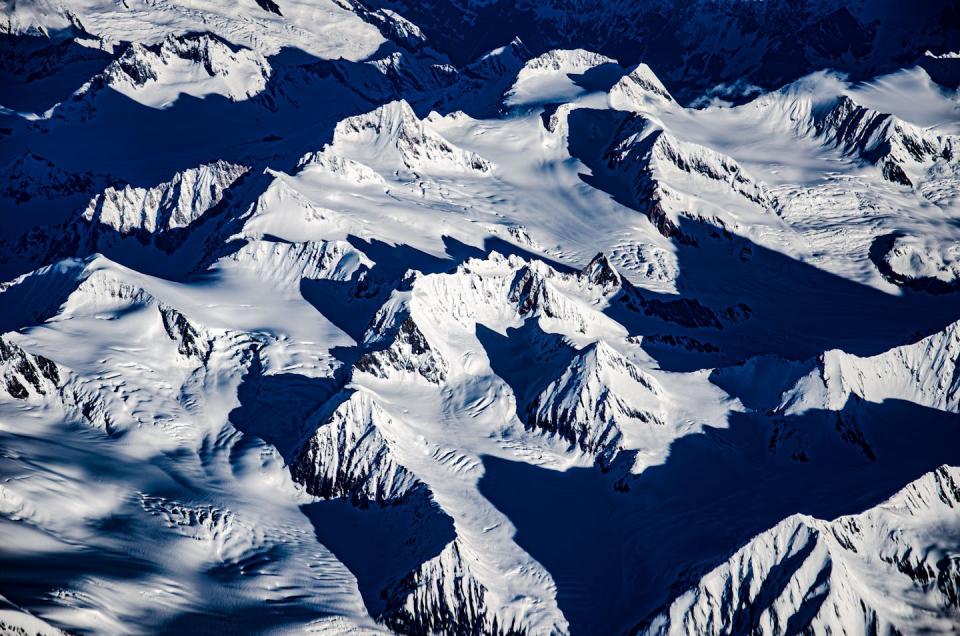As humans change the planet’s climate and ecosystems, scientists are looking to Earth’s history to help predict what will come out of climate change. To that end, massive ice structures like glaciers serve as nature’s freezers, archiving detailed records of past climates and ecosystems, including viruses.
We are a team of microbiologists and paleoclimatologists who study ancient microorganisms, including viruses, preserved in glacial ice. With colleagues Lonnie Thompson and Virginia Rich in the Ice Core Paleoclimatology group at Ohio State University, we are investigating interactions between viruses and their environment archived in ice cores taken from the Guliya Glacier on the Tibetan Plateau.
By linking the genomes of ancient viral communities to specific climatic conditions preserved in glaciers, our newly published research provides insights into how these viruses have adapted to Earth’s changing climate over the past 41,000 years.
Reading history in viral genes
First, we used metagenomes, collections of genomes that capture the total genetic content of all microorganisms found in environmental samples, to reconstruct viral genomes from nine different time periods in the Guliya ice core. These time horizons span three major cold-to-warm cycles and provide a unique opportunity to observe how viral communities change in response to different climatic conditions.
As a result of our analyses, we obtained the genomes equivalent to 1,705 virus species, increasing the number of known ancient viruses preserved in glaciers by more than fifty-fold.
Only a quarter of the viral species we found shared species-level similarities with any of the viruses previously identified in the nearly 1,000 metagenomes captured in global datasets. Most of these overlapping species were also from the Tibetan Plateau. This suggests that at least some of the viruses preserved in the Guliya Glacier have arisen locally in the region, but it also speaks to the relative lack of glacier viruses in existing databases.
Using these new reference genomes, we tried to “read” their stories.
One important finding was that viral communities differed significantly between cold and warm climate periods. The most distinct viral species assemblage in the glacier occurred approximately 11,500 years ago, coinciding with the major transition from the Last Glacial to the Holocene. This suggests that the unique climatic conditions during the cold and warm periods profoundly influenced the composition of viral communities. We hypothesize that these effects were likely due to viruses from other locations being carried by changing wind patterns and subject to selection pressures from changing temperatures in the glacier.
Digging deeper, we determined how viruses interact with their hosts. To do this, we used computer models to compare viral genomes to the genomes of other microbes found in this environment. We found that viruses infect continuously FlavobacteriaA bacterial lineage commonly found in glacial environments.

We also learned that viruses from Guliya Glacier have to “steal” genes from their hosts to manipulate their metabolism. The viral genomes encoded 50 metabolic accessory genes involved in metabolism, including the synthesis and breakdown of vitamins, amino acids, and carbohydrates. Some of these genes were abundant in all nine time periods studied, suggesting that they help microbial hosts cope with the harsh conditions on glacier surfaces and thus improve viral fitness.
So viruses not only infect and kill cells, they also alter the fitness of their hosts during infection, which affects their capacity to survive in the extreme conditions of glacial environments.
Climate change over time
Our findings offer new insight into how viral life has responded to climate change over tens of thousands of years.
Understanding these ancient interactions provides a unique opportunity for future research in both virology and climate science. By studying how ancient viruses responded to past climate change, researchers can gain valuable insights into how viruses are adapting to ongoing global climate change.
We believe that glacial ice continues to be a critical resource for uncovering the history of Earth’s climate and the life it supports by gathering information about microorganisms and their ecosystems at each layer through time, especially as glacial ice reserves are rapidly diminishing.
This article is republished from The Conversation, a nonprofit, independent news organization that brings you facts and trusted analysis to help you understand our complex world. By Zhi-Ping Zhong Ohio State University; Ellen Mosley-Thompson, Ohio State University; Lonnie Thompson, Ohio State University; Matthew Sullivan, Ohio State Universityand Virginia Rich, Ohio State University
Read more:
Zhi-Ping Zhong receives financial support from the Byrd Postdoctoral Research Fellowship, the Heising-Simons Foundation, the National Science Foundation, the Gordon and Betty Moore Foundation, and the U.S. Department of Energy’s Joint Genome Institute.
Ellen Mosley-Thompson receives funding from the Heising-Simons Foundation
Lonnie Thompson receives funding from the National Science Foundation, the Chinese Academy of Sciences, and the Heising-Simons Foundation
Matthew Sullivan receives funding from the Gordon and Betty Moore Foundation and the U.S. Department of Energy.
Virginia Rich receives funding from the Heising-Simons Foundation.